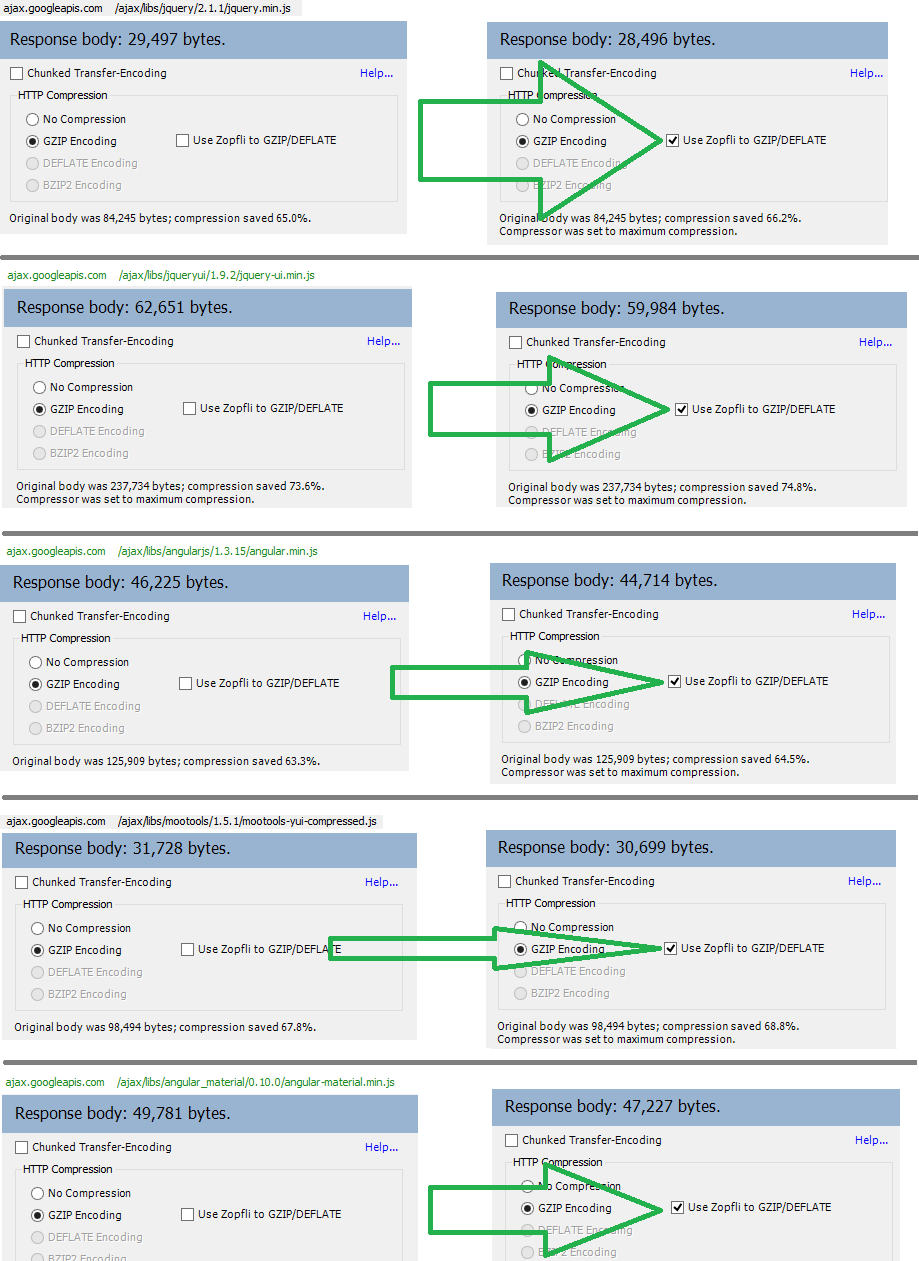I’ve written about Zopfli quite a bit in the past, and even wrote a tool to apply it to PNG files. For fun, I had a look at one of the most optimized pages in the world: Google.com, through the lens of Zopfli.
Here are the basic resources delivered by the Google homepage:

This breakdown shows that Google isn’t optimizing their own compression using the compressor they wrote. The Savings column shows the number of bytes saved by using Zopfli over whatever Google used to compress the asset. Using the default settings in an ideal world, Google could save up to 16.5k, almost 5% of the bytes transferred, by using Zopfli.
I’ve color-coded the column based on how practical I believe the savings to be—the green numbers are the static images where there’s no question the size benefit could be realized. The yellow numbers are cases where script files are compressed; given the complicated query string parameters, I’m betting these scripts are dynamically generated and the compression cost of Zopfli might not be reasonable. The red number is the homepage itself, which probably isn’t reasonable to Zopfli compress as it certainly is generated dynamically.
So, most likely the savings of a practical Zopfli deployment on the homepage page would be about 3.7kb; savings are much greater on other pages on other sites.
More interesting, however, is the Google API CDN, which hosts scripts for other sites; optimizing these would take a minute or two at most and make every site that uses them faster.

Use Zopfli; give the tubes a little bit more room.
-Eric
PS: You may already have zopfli.exe on your system; Fiddler installs a copy to its \Tools\ subfolder!